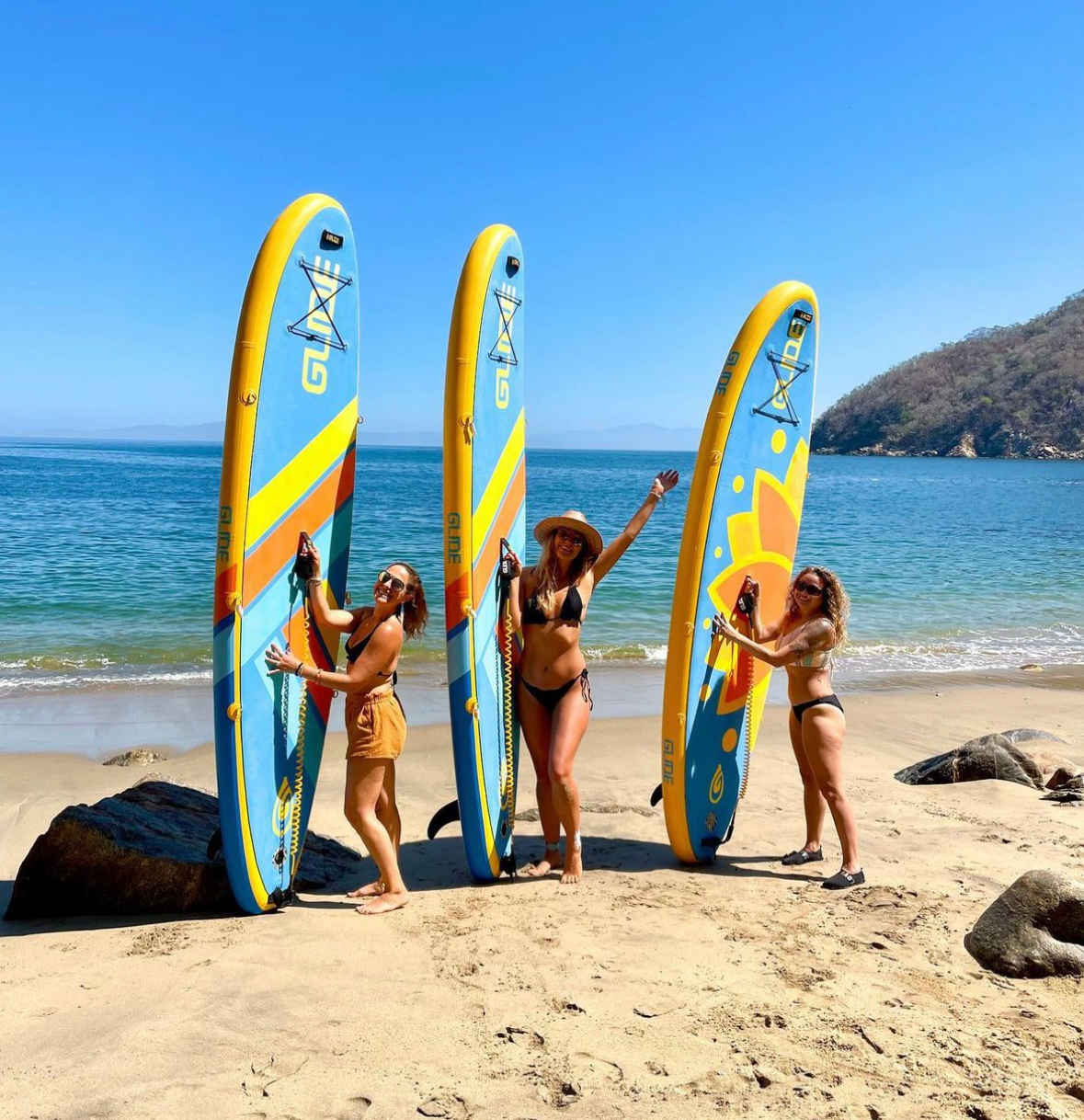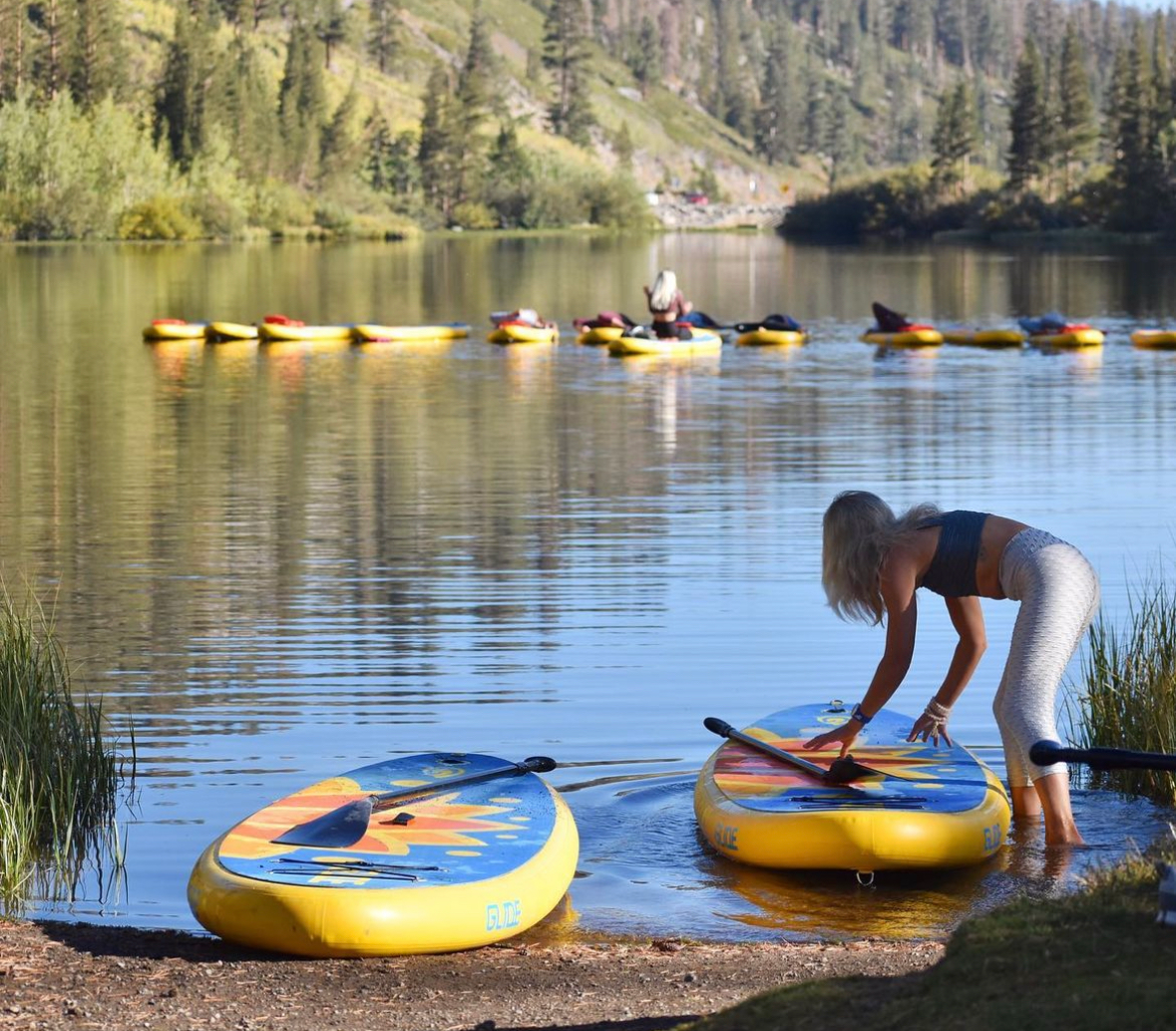
Reasons to Swap Your Kayak for a Paddle Board
This year, it's time to turn your kayak in for a stand up paddle board. Find out why.
Introductions

Revamping your water sport experience? Paddle boarding might just be the thrilling upgrade you're searching for! With its skyrocketing popularity, this sport blends excitement, fitness, and exploration into one dynamic activity. Here's why transitioning from kayaking to paddle boarding could be your next best move, transforming your aquatic adventures with every stroke.
Unlocking Balance and Core Strength with a Paddle Board
Imagine the sensation of floating atop water, with just a paddleboard between you and the deep blue. Paddle boarding is not just an activity; it's a full-body workout that challenges your balance, enhancing stability and strengthening your core. Unlike kayaking, which primarily works the upper body, paddle boarding invites your entire body into the exercise, offering a holistic fitness experience that tones muscles, burns calories, and elevates your overall health.
Embrace Versatility Like Never Before The beauty of paddle boarding lies in its versatility. Whether you're gliding peacefully over a calm lake or navigating the vibrant waves of the ocean, every session is a new adventure. Paddle boarding opens up a world of possibilities, from SUP yoga to fishing, racing, and touring. This adaptability allows you to tailor your aquatic experiences to your passions, making paddleboarding a uniquely personal and endlessly enjoyable sport.
Ease into Paddle Boarding with a Gentle Learning Curve
One of the most appealing aspects of paddle boarding is its accessibility. Most enthusiasts find they can quickly get the hang of it with minimal instruction, making it a fantastic choice for beginners and families alike. Kayaking, while rewarding, often demands a steeper learning curve, with techniques like paddle strokes and self-rescue maneuvers to master. Paddle boarding simplifies the entry into water sports, ensuring everyone can join in on the fun without the intimidation factor.
Superior Views and Connection to the Environment Standing tall on your paddleboard, you're privy to a perspective like no other. This elevated stance not only offers unparalleled views of your surroundings but also fosters a deeper connection with nature. Spot wildlife, navigate with ease, and soak in breathtaking landscapes—all from the unique vantage point of your paddleboard. Kayaking, with its closer-to-water seating, can't quite match this immersive outdoor experience.
Simplified Transportation and Storage Solutions
Paddle boards, especially the inflatable kind, are a breeze to transport and store. Easily rolled up and stashed in a backpack or car trunk, they're the perfect companion for adventurers on the go. Kayaks, though varied in size and design, typically require more effort to transport and store, making paddleboards the hassle-free choice for spontaneous explorations.
Fostering Social Connections on the Water

Paddle boarding stands out as a social sport. The upright position not only makes chatting with fellow paddlers effortless but also enhances engagement with onlookers and friends onshore. Whether you're partaking in a group fitness class, touring, or simply enjoying a leisurely day out with friends, paddle boarding encourages social interaction, enriching your water sport experience with every outing.
A Haven for Mindfulness and Relaxation The rhythmic paddle stroke, the gentle lap of waves against your board—paddle boarding offers a serene backdrop for mindfulness and relaxation. It's an activity that promotes body awareness, mental clarity, and stress relief, especially when combined with yoga practices. While kayaking offers its form of relaxation, the full-body engagement and balance required for paddleboarding provide a unique, meditative experience on the water.
Eco-Friendly Adventures Await
Paddle boarding is a nod to environmental stewardship, powered solely by human effort. It's a sport that lets you enjoy the great outdoors while minimizing your ecological footprint, offering a sustainable alternative to motorized water activities. While kayaking shares this eco-friendly ethos, paddle boarding amplifies your awareness of the natural world, inspiring a deeper commitment to preserving our planet's waterways.
Conclusion: The Call of the Paddleboard

Transitioning from kayaking to paddle boarding opens up a world of improved fitness, versatility, accessibility, and environmental connection. It's an invitation to view water sports through a new lens, one that promises adventure, camaraderie, and a profound bond with nature. Whether you're a seasoned kayaker or new to the scene, embracing paddle boarding could redefine your aquatic experiences, bringing fresh excitement and joy to every journey on the water.
By exploring paddle boarding, you're not just adopting a new hobby; you're stepping into a vibrant community of enthusiasts, each with a story to share. So, why not trade your kayak for a paddle board and dive into the endless possibilities that await?



